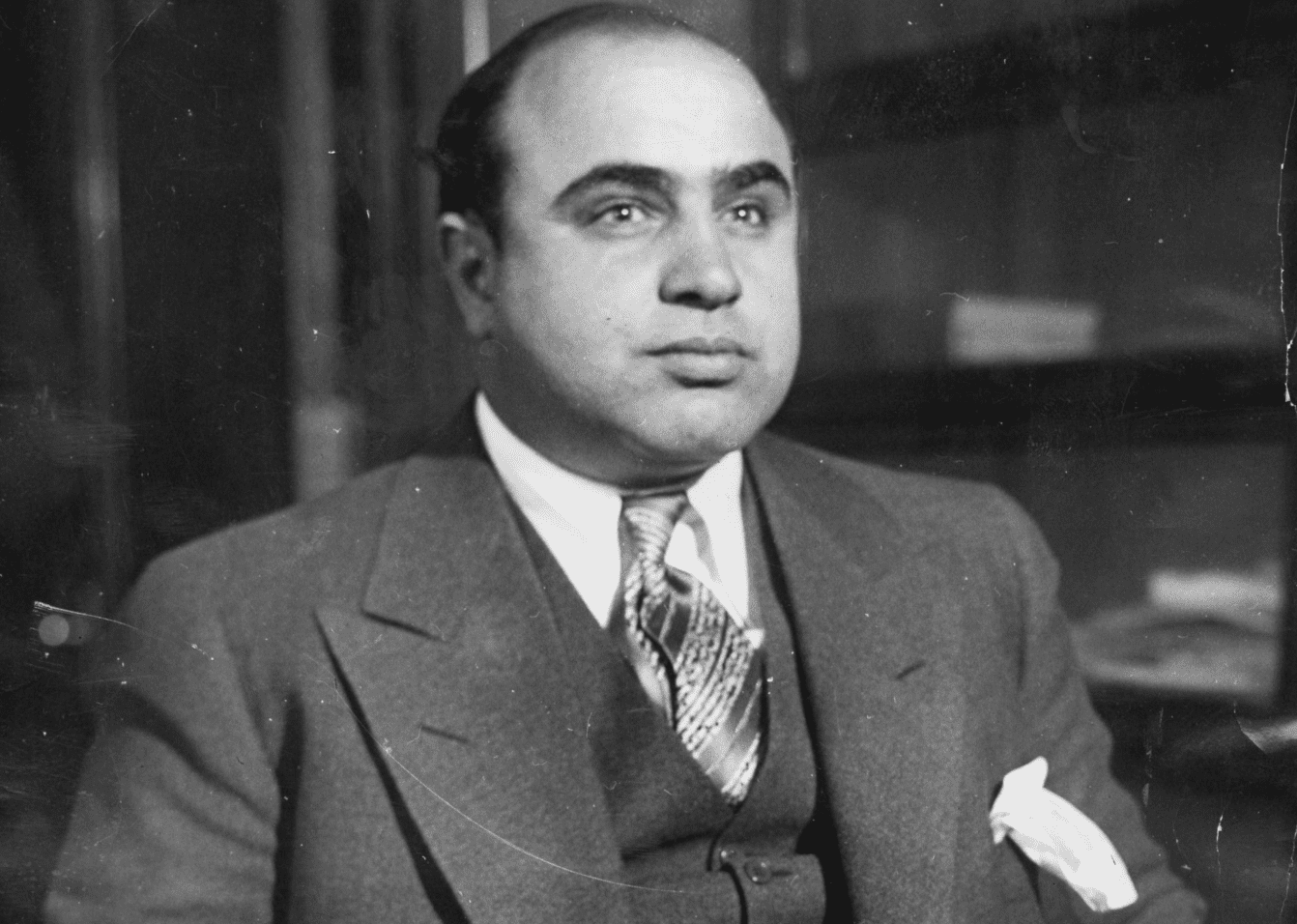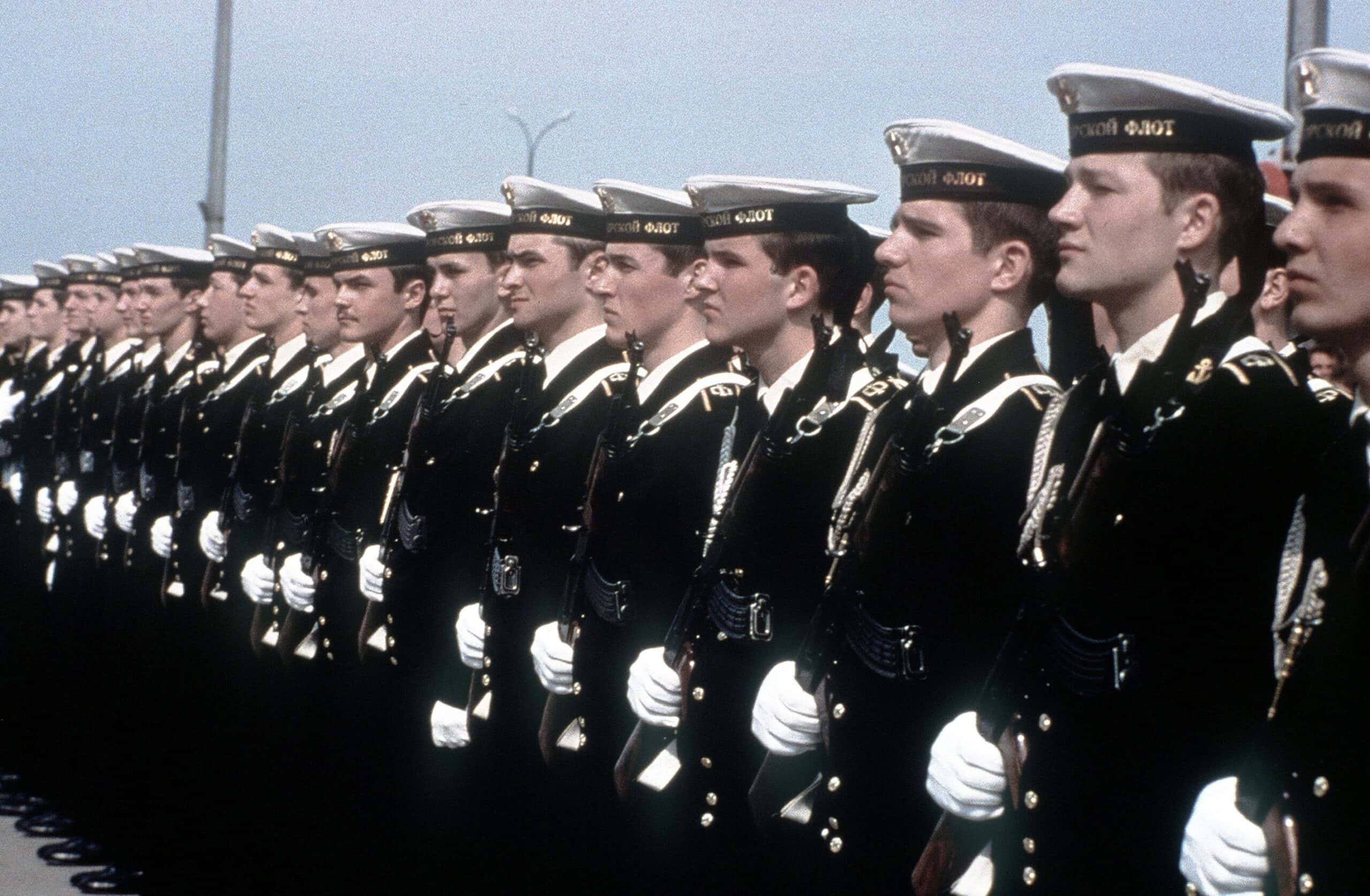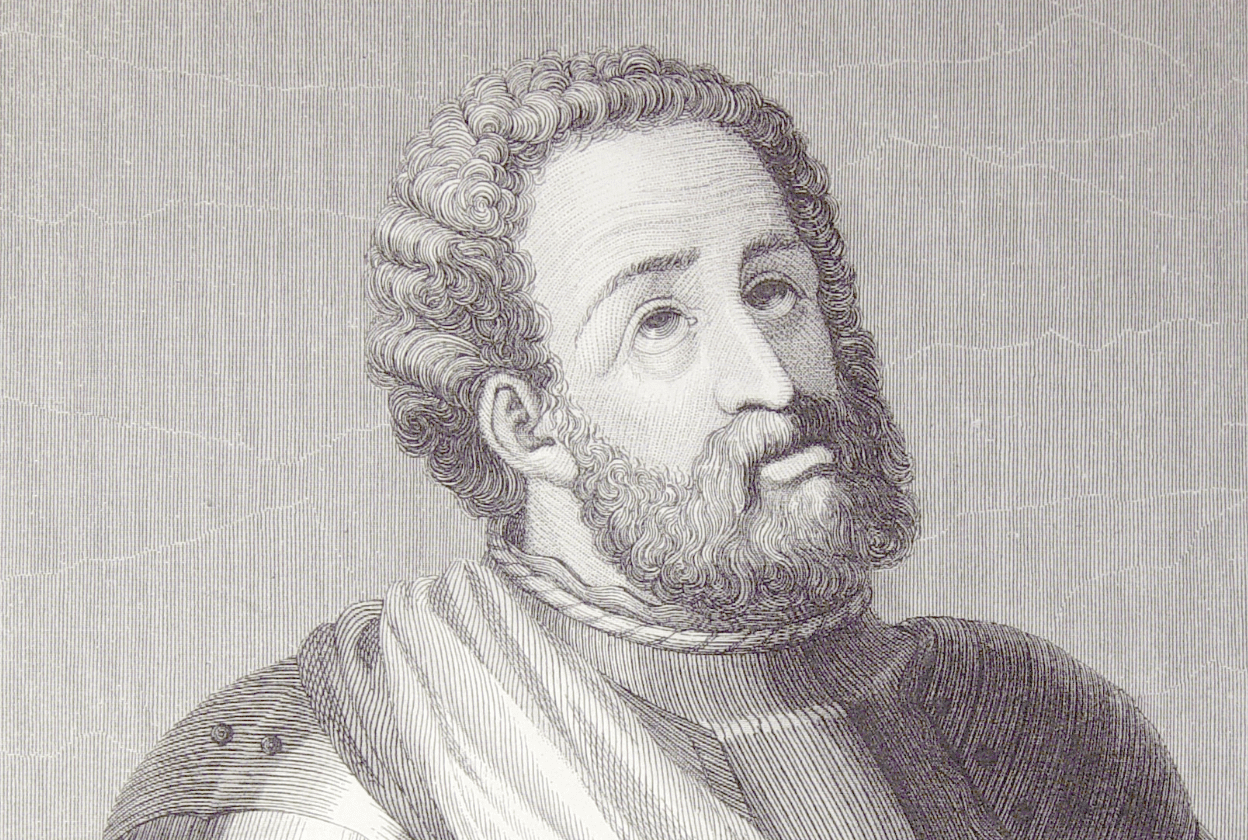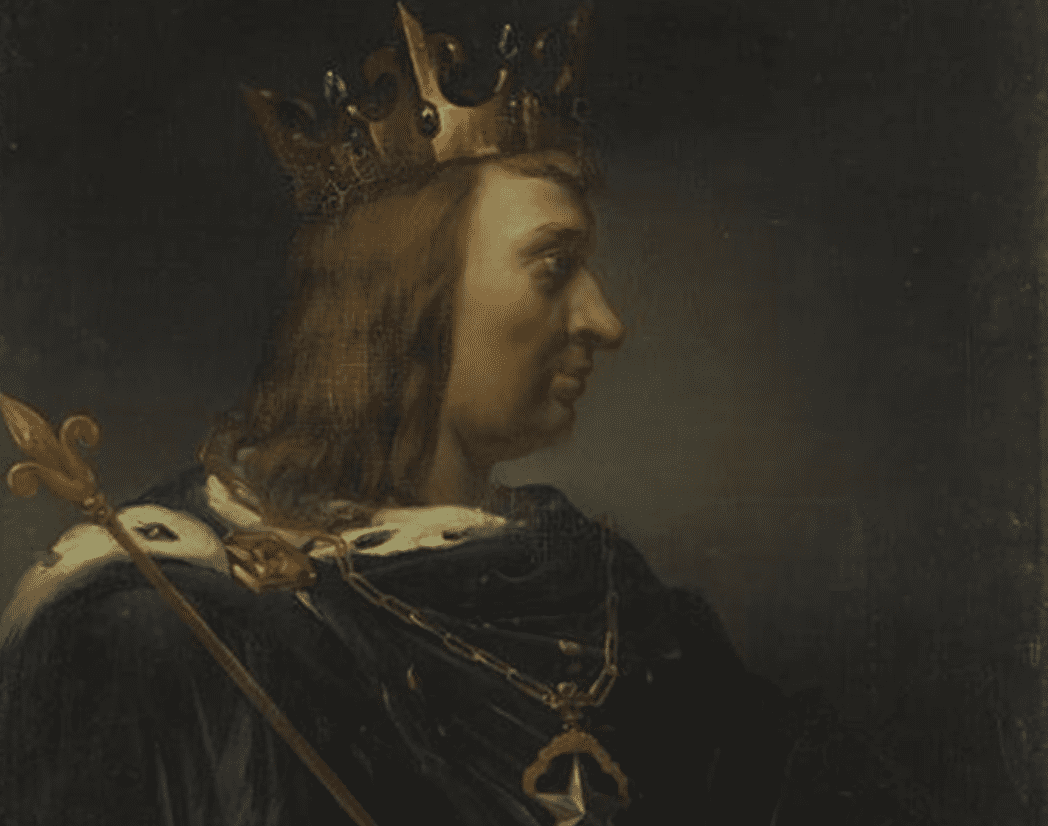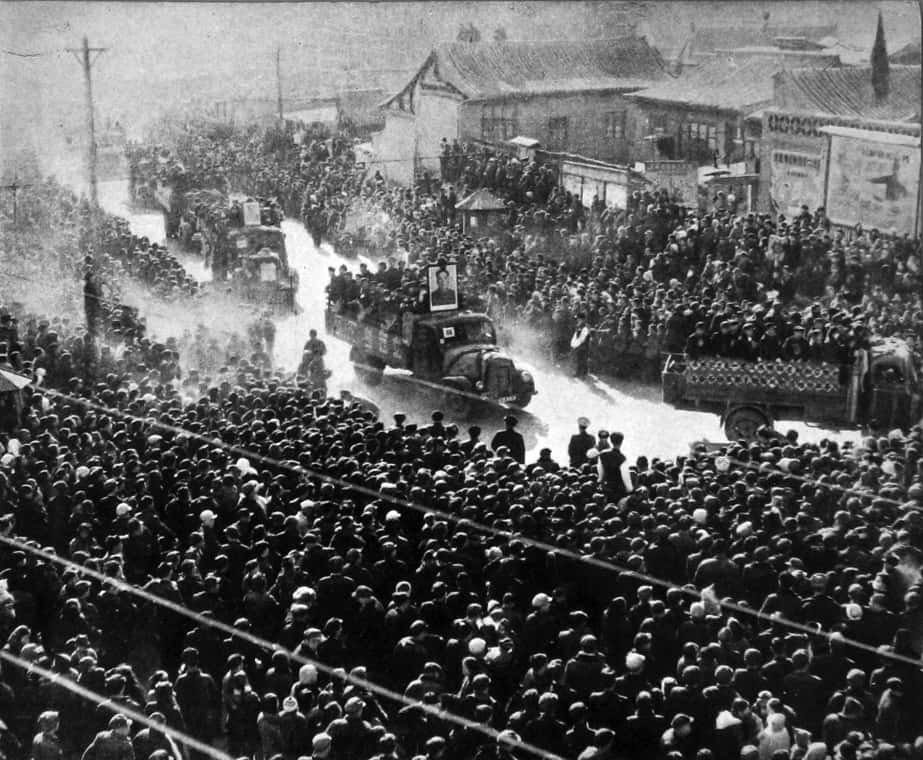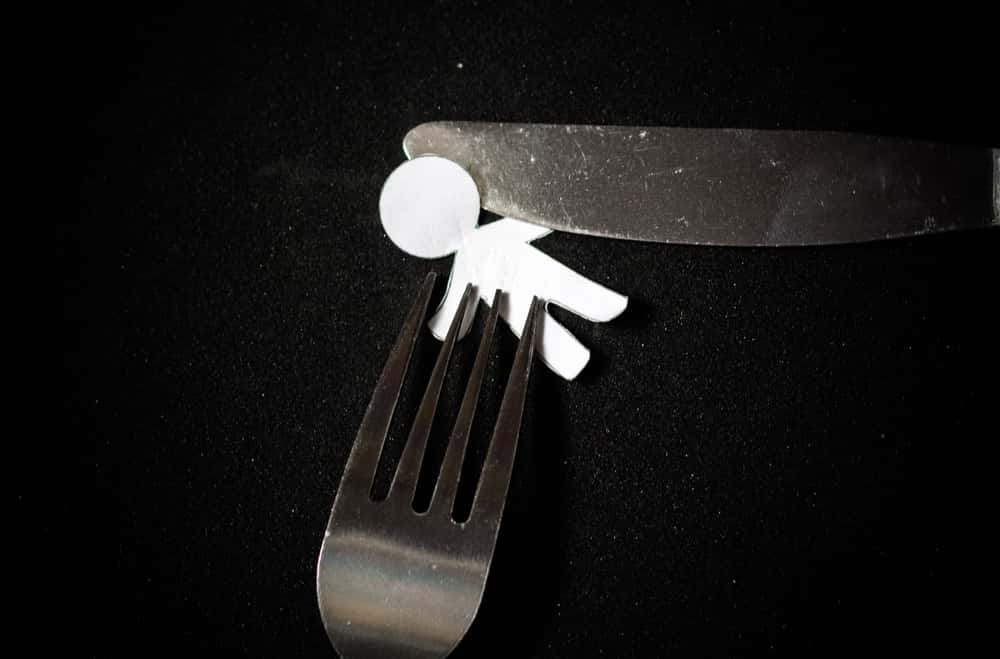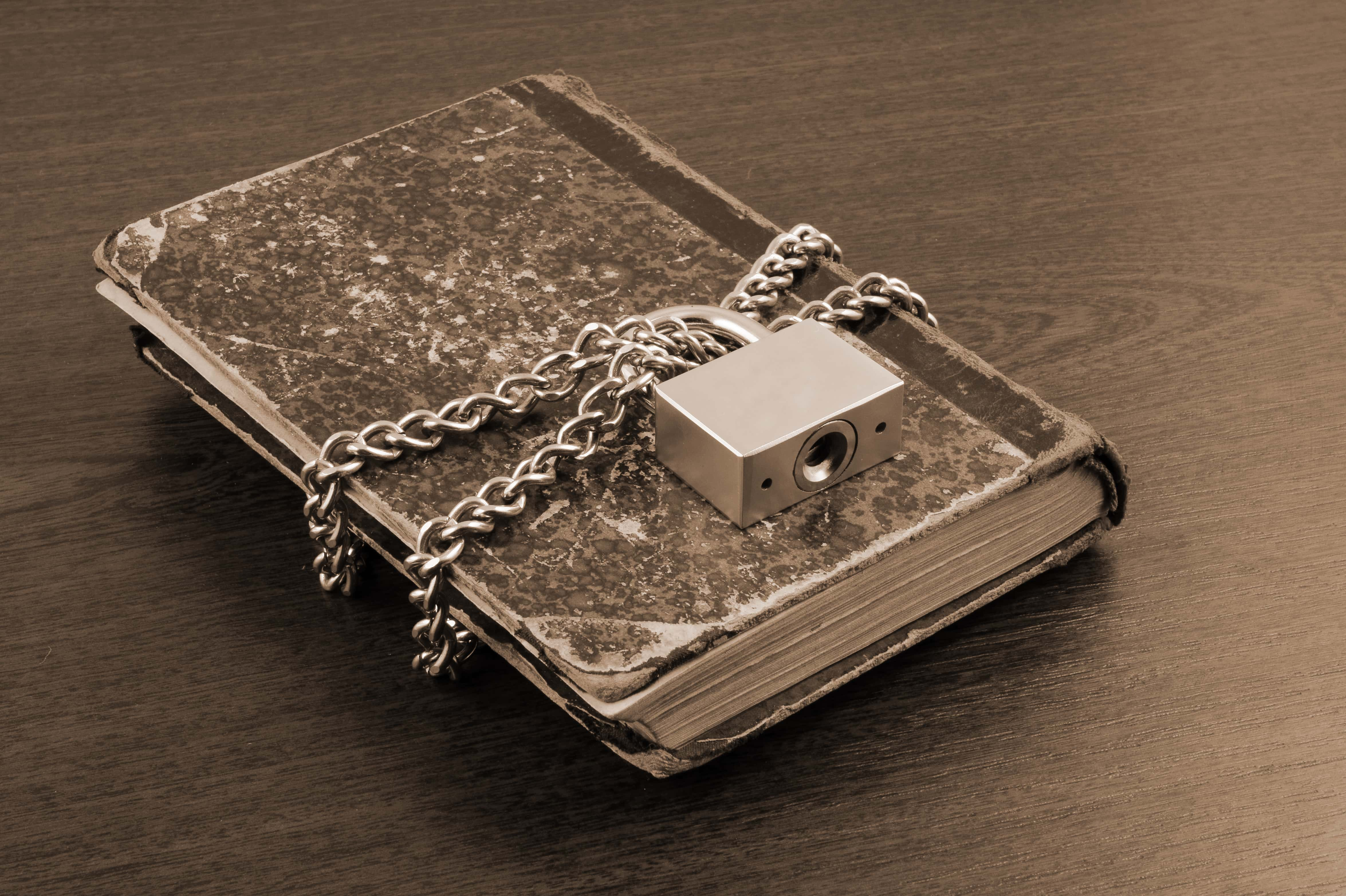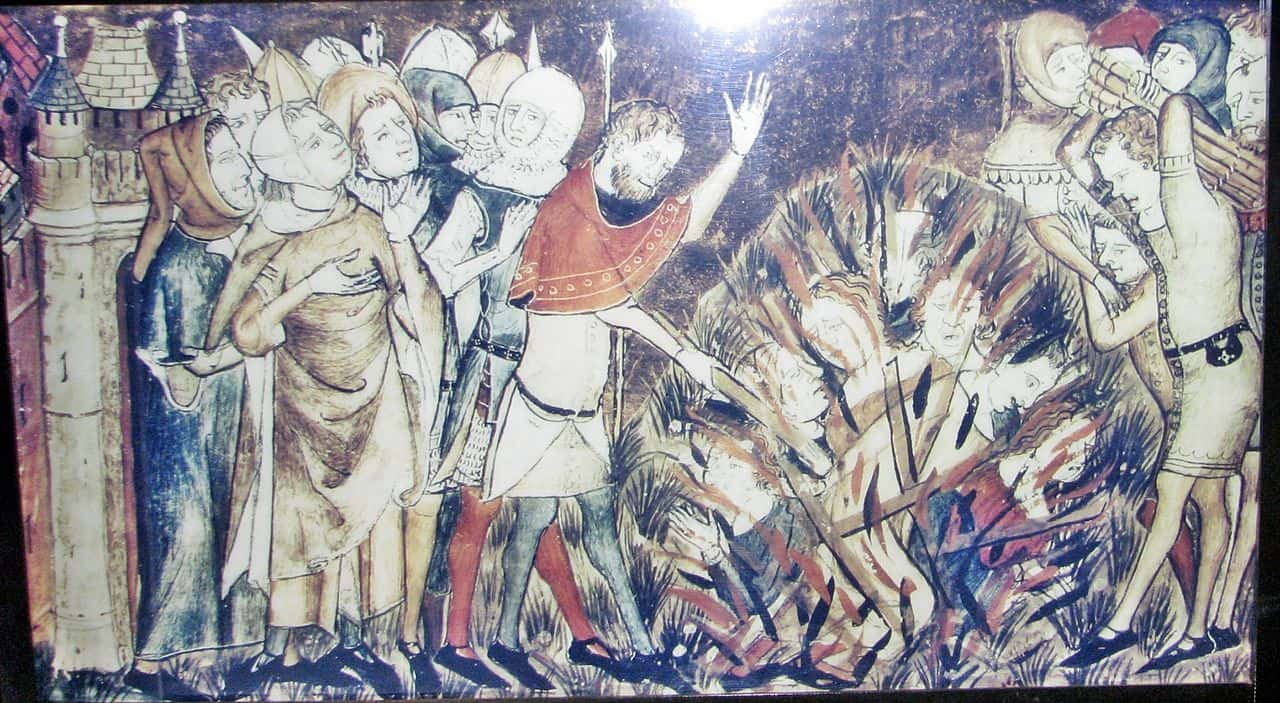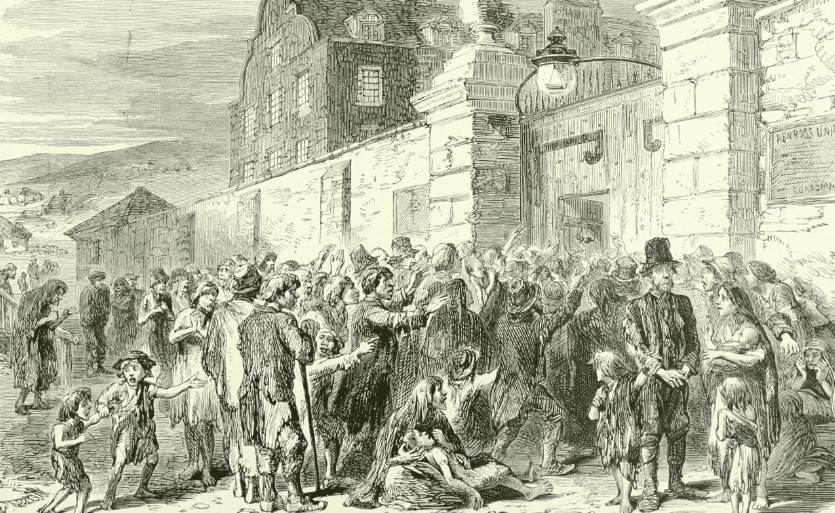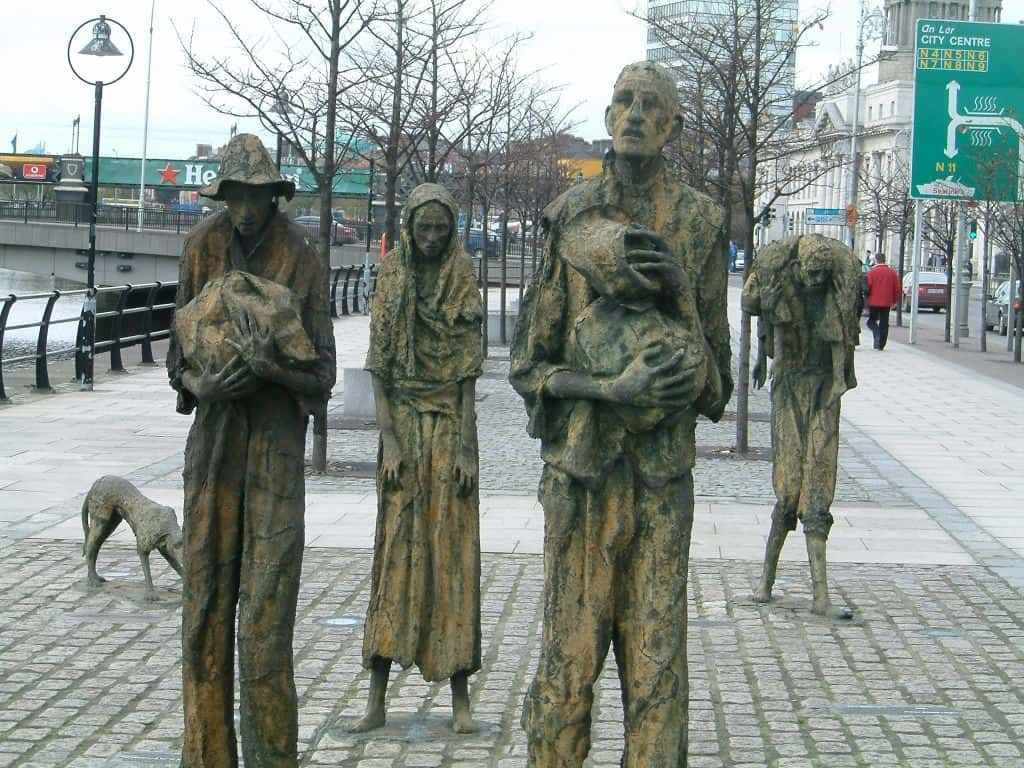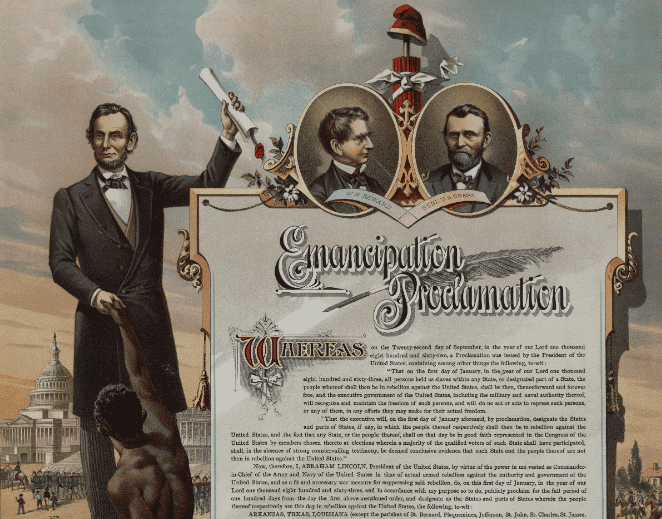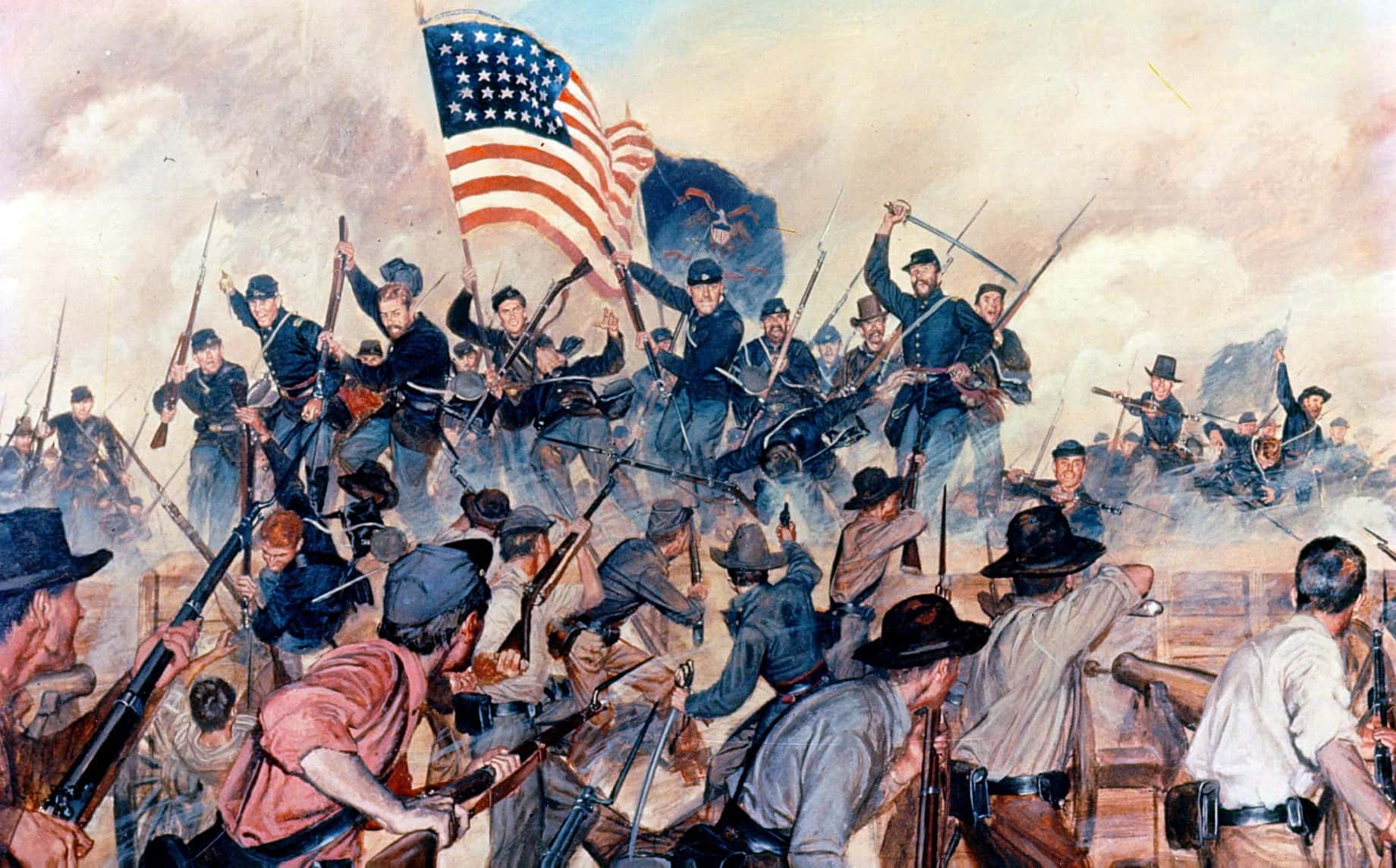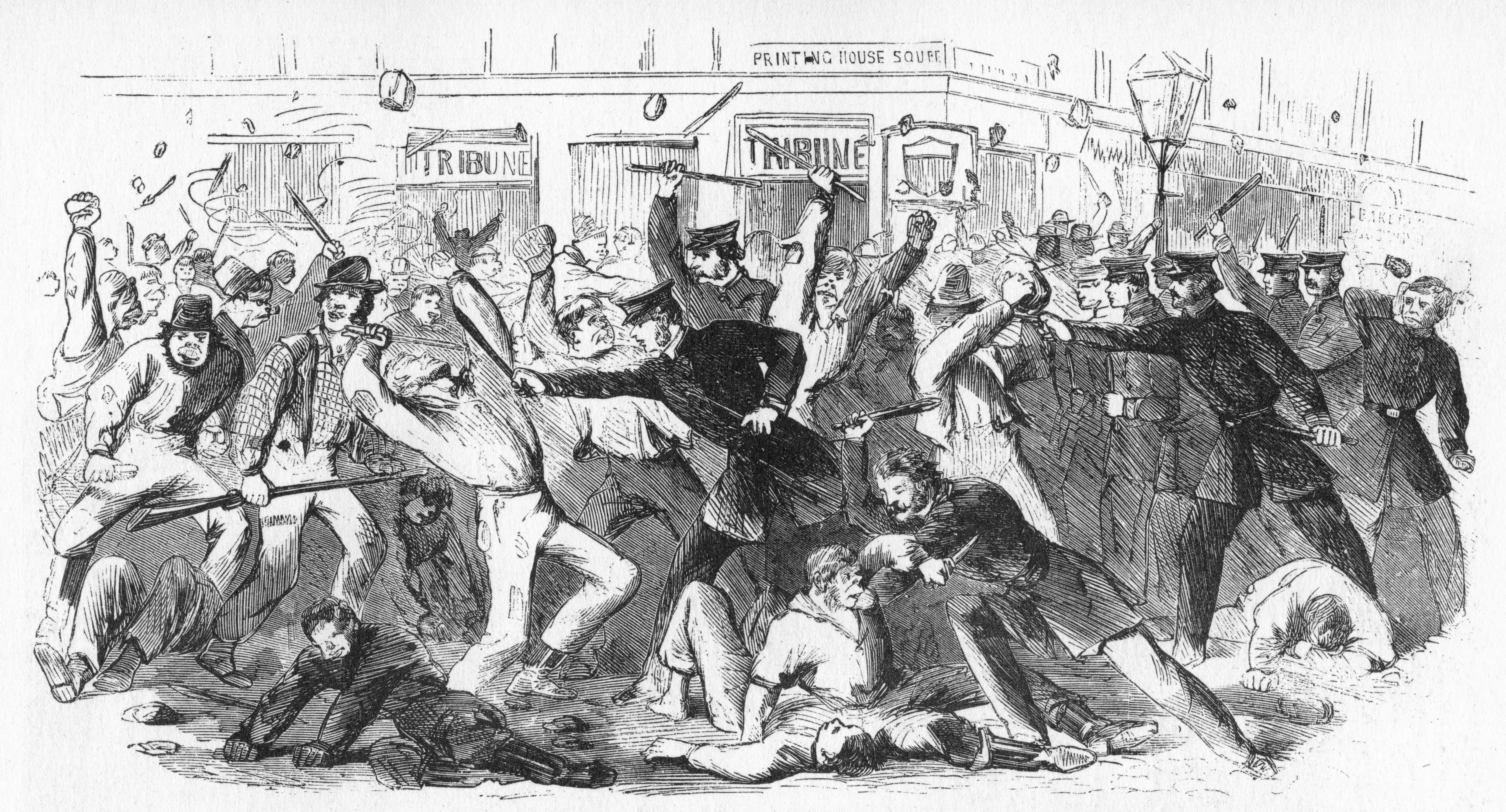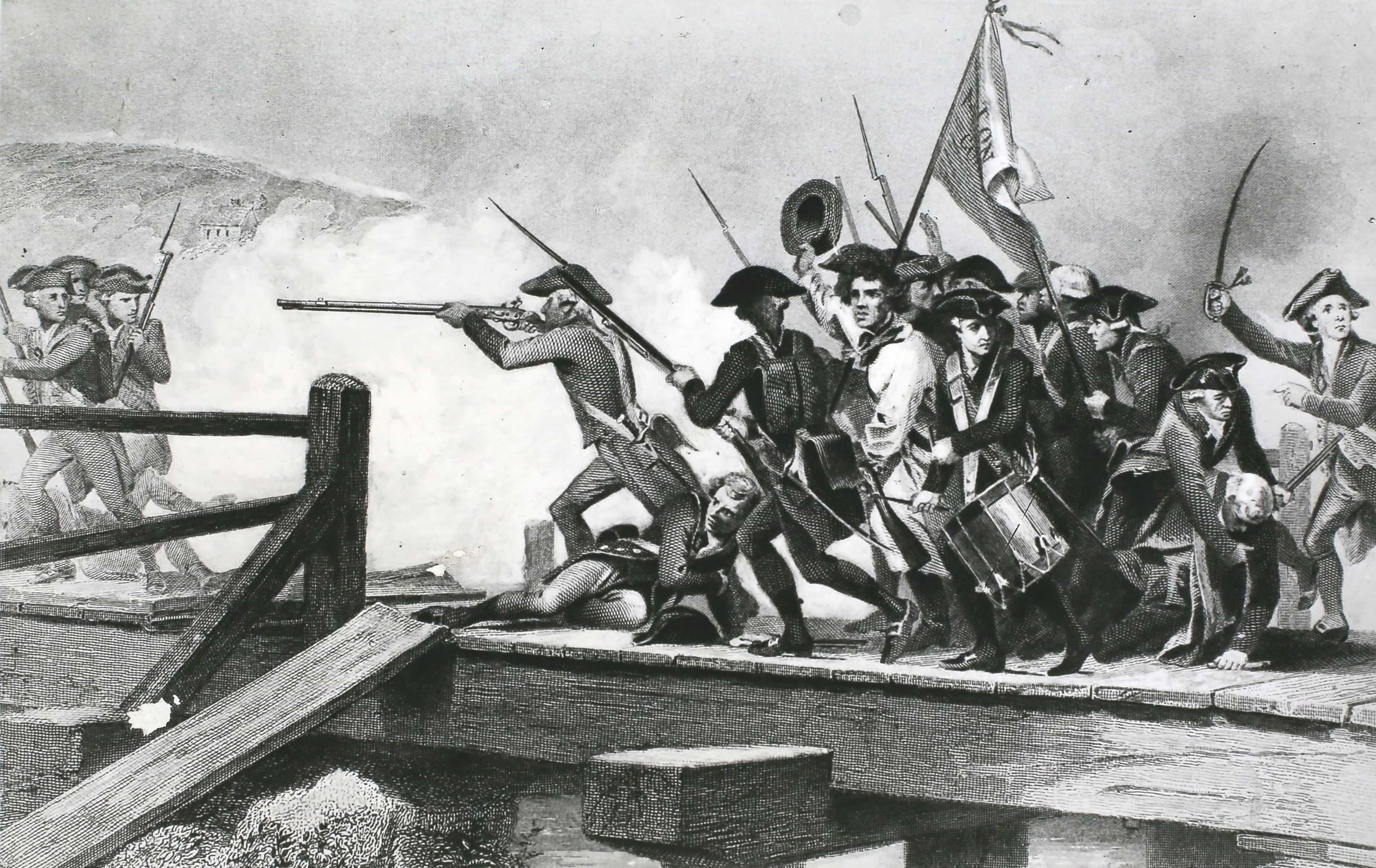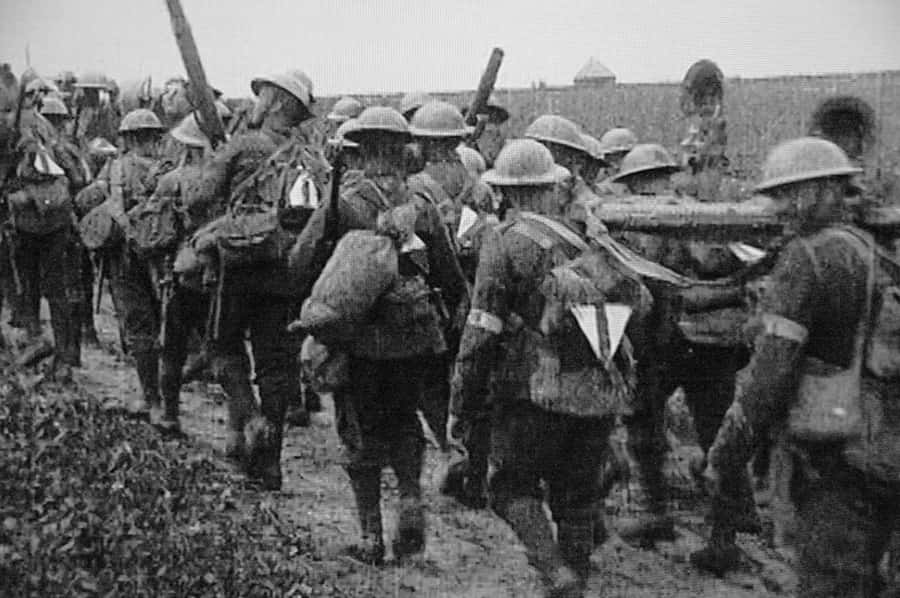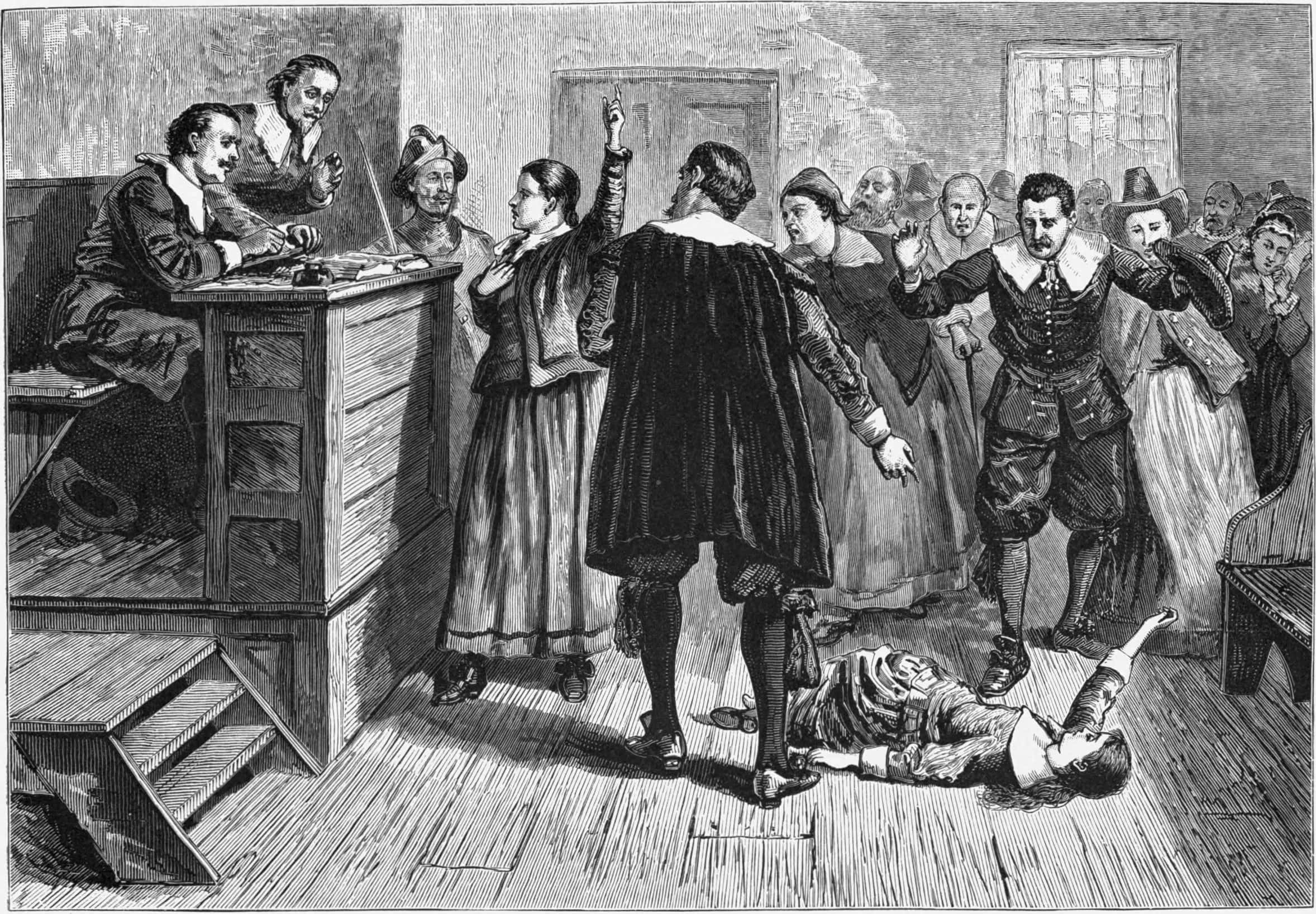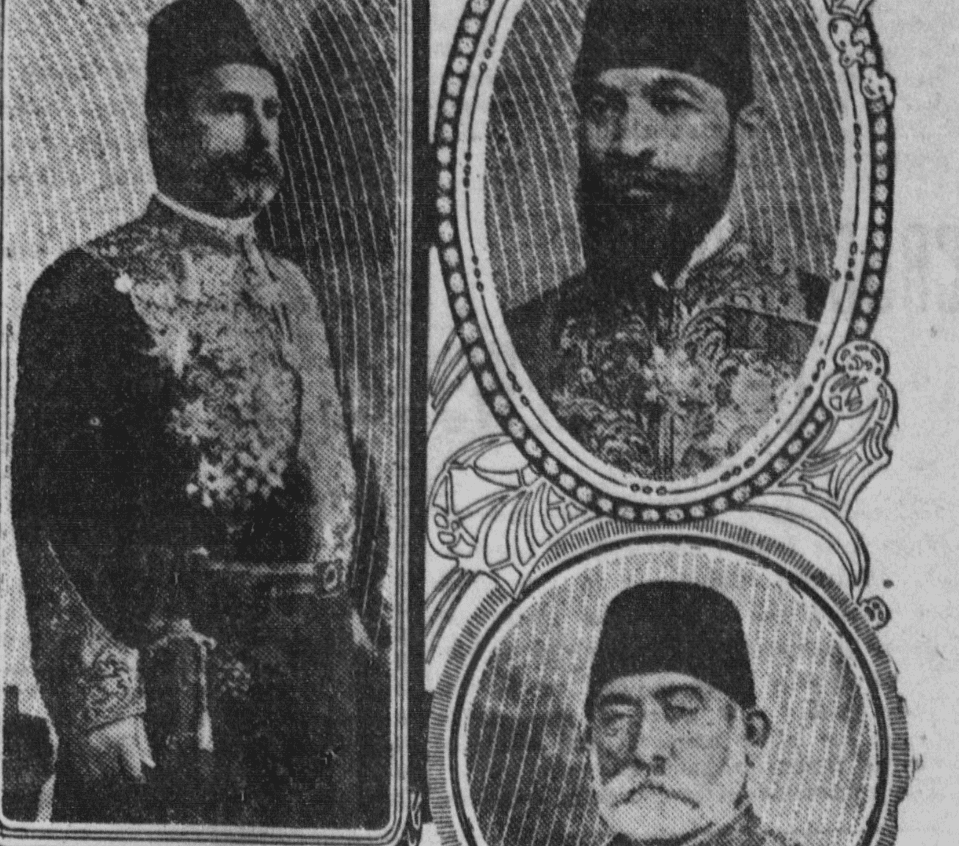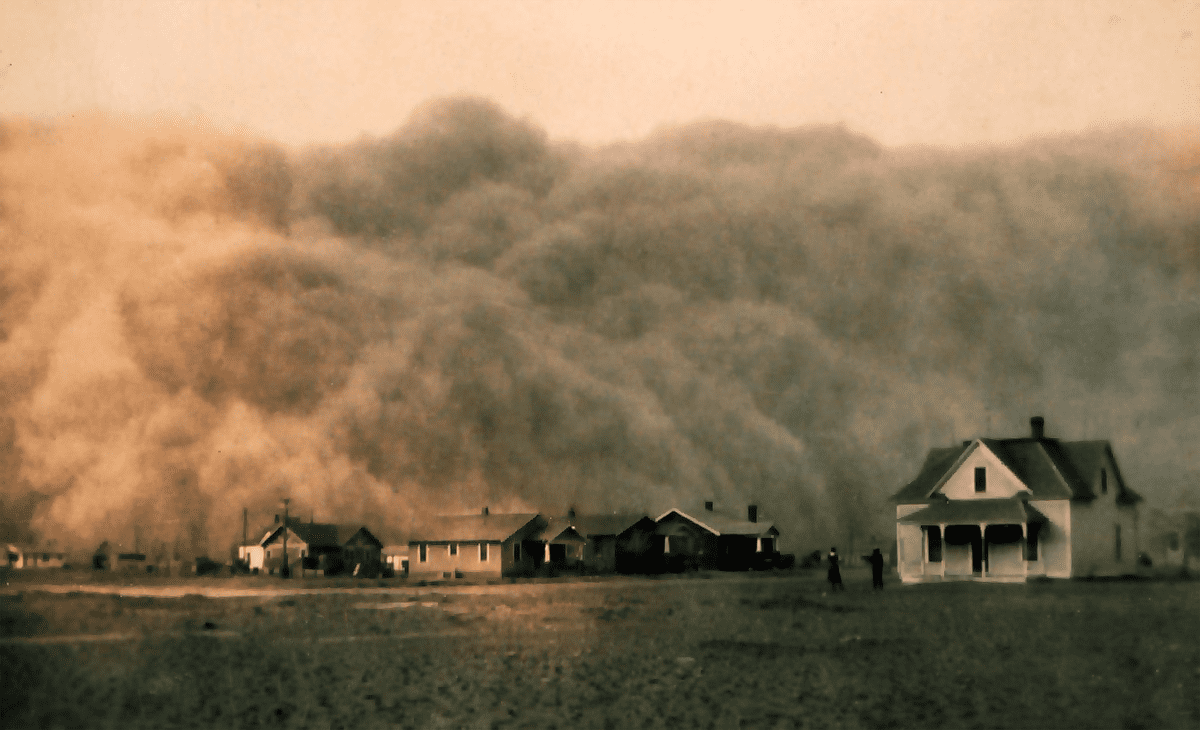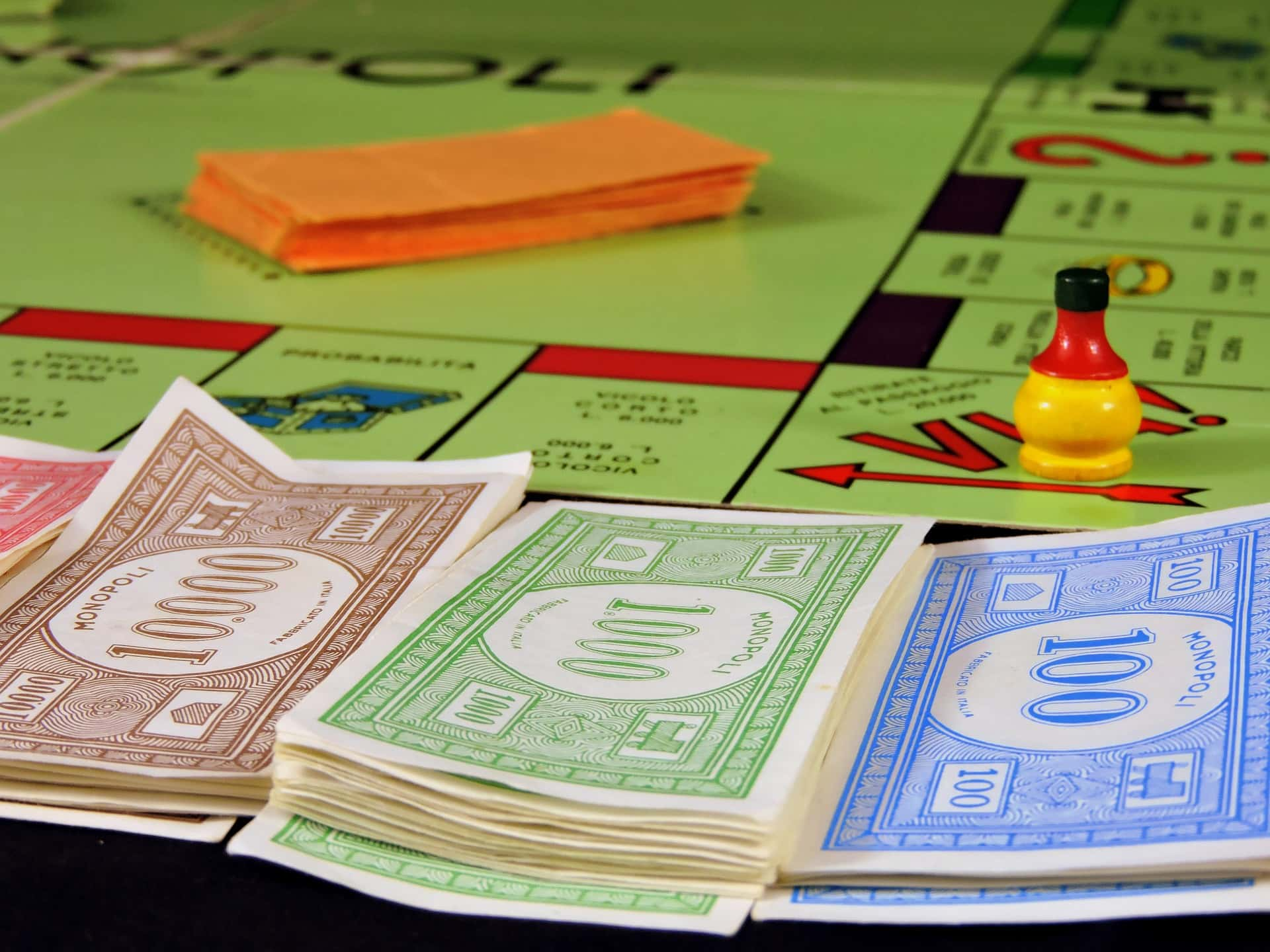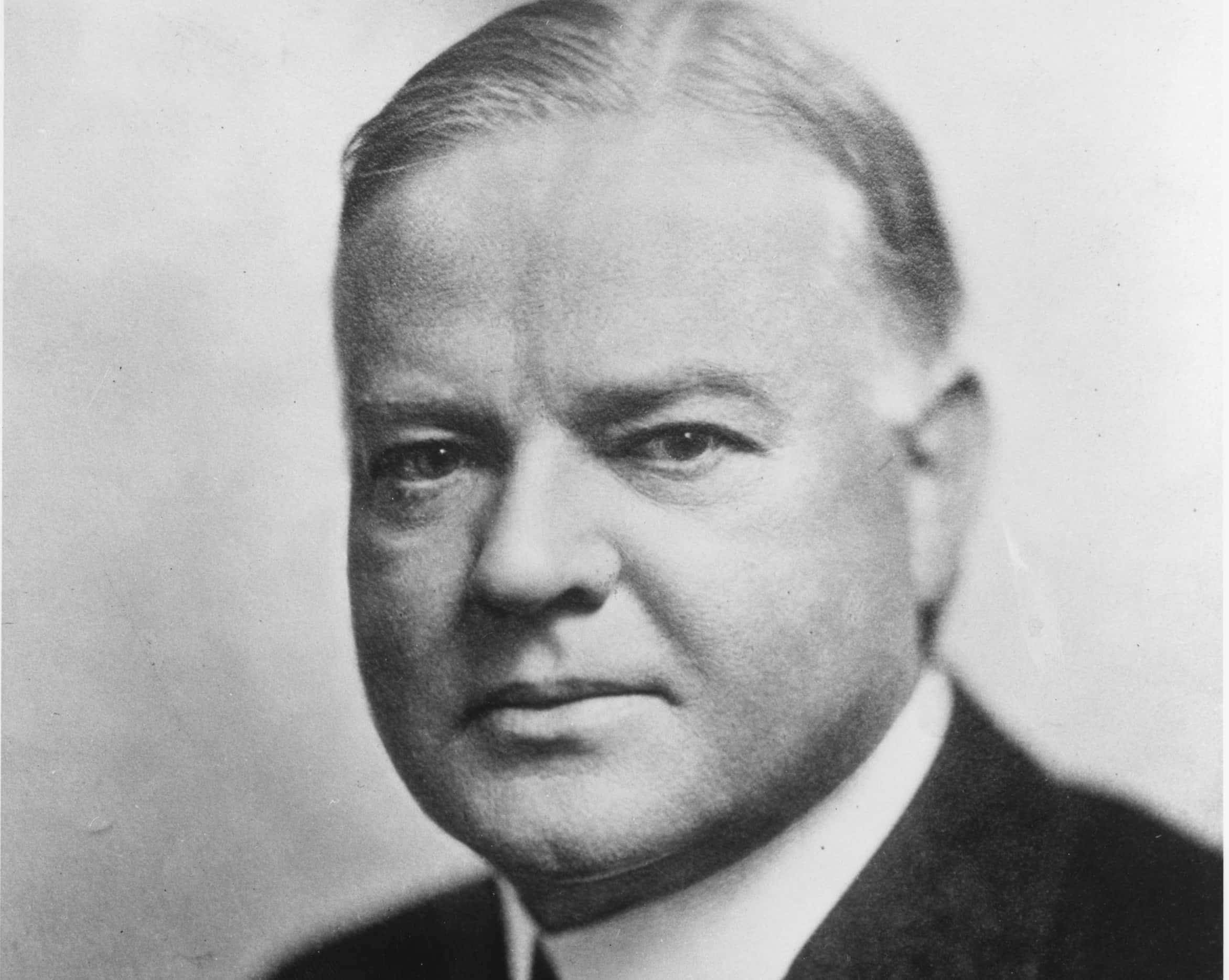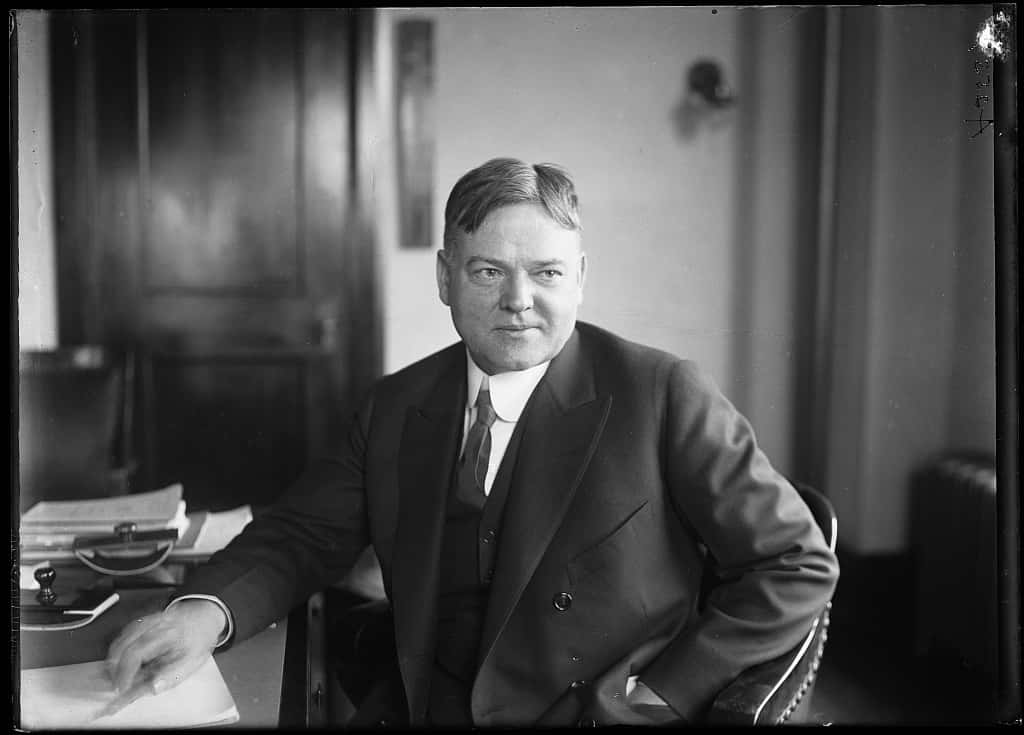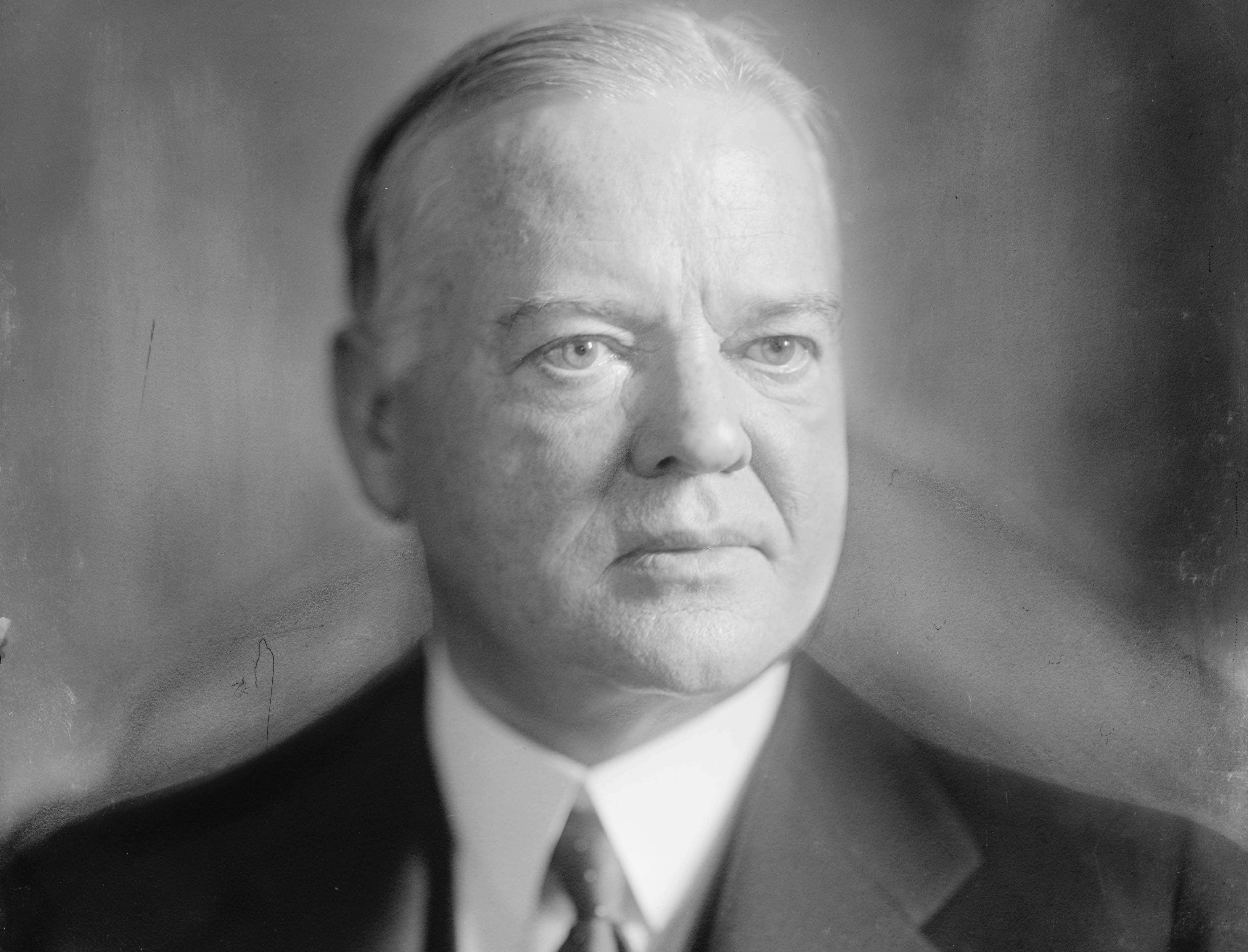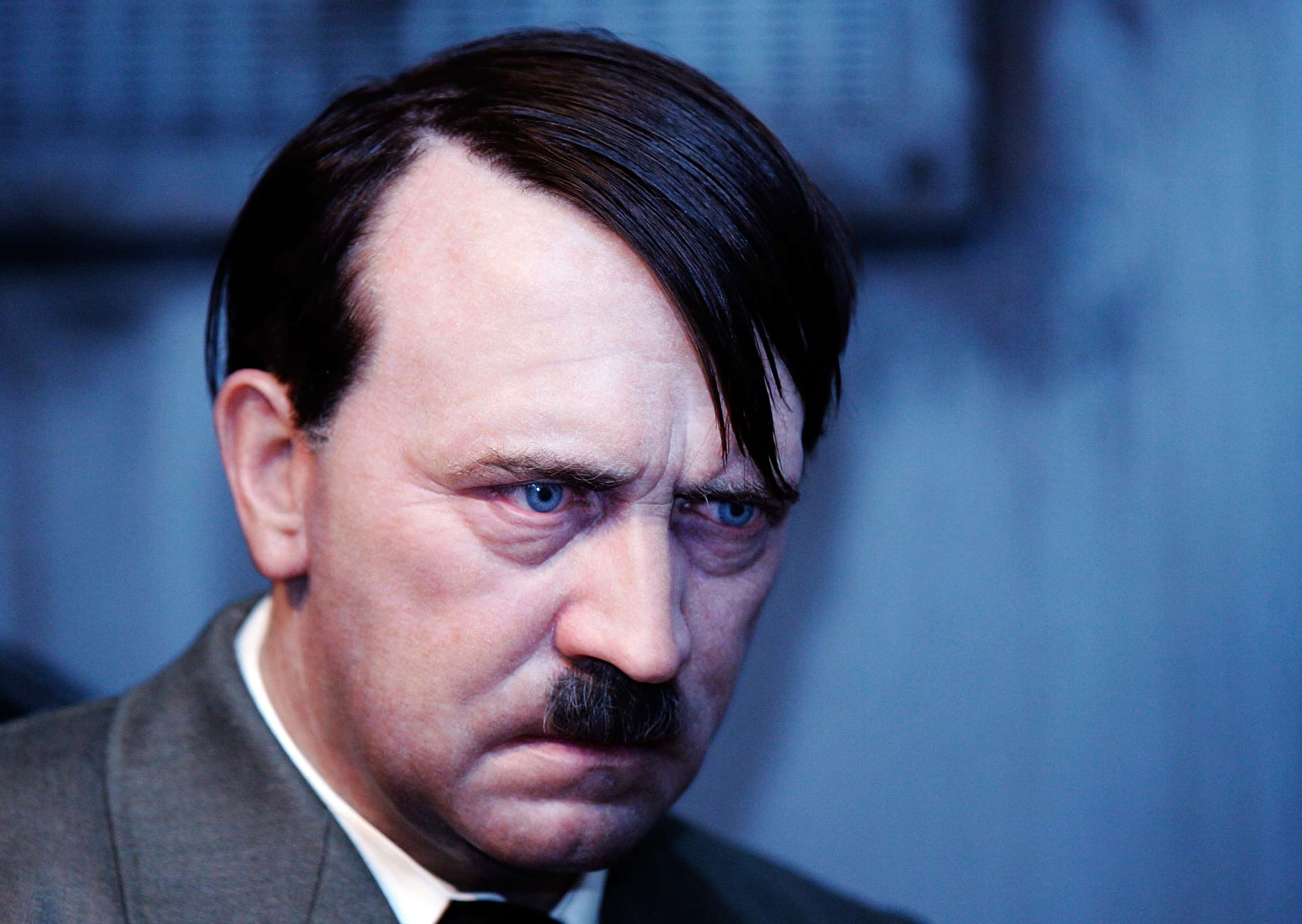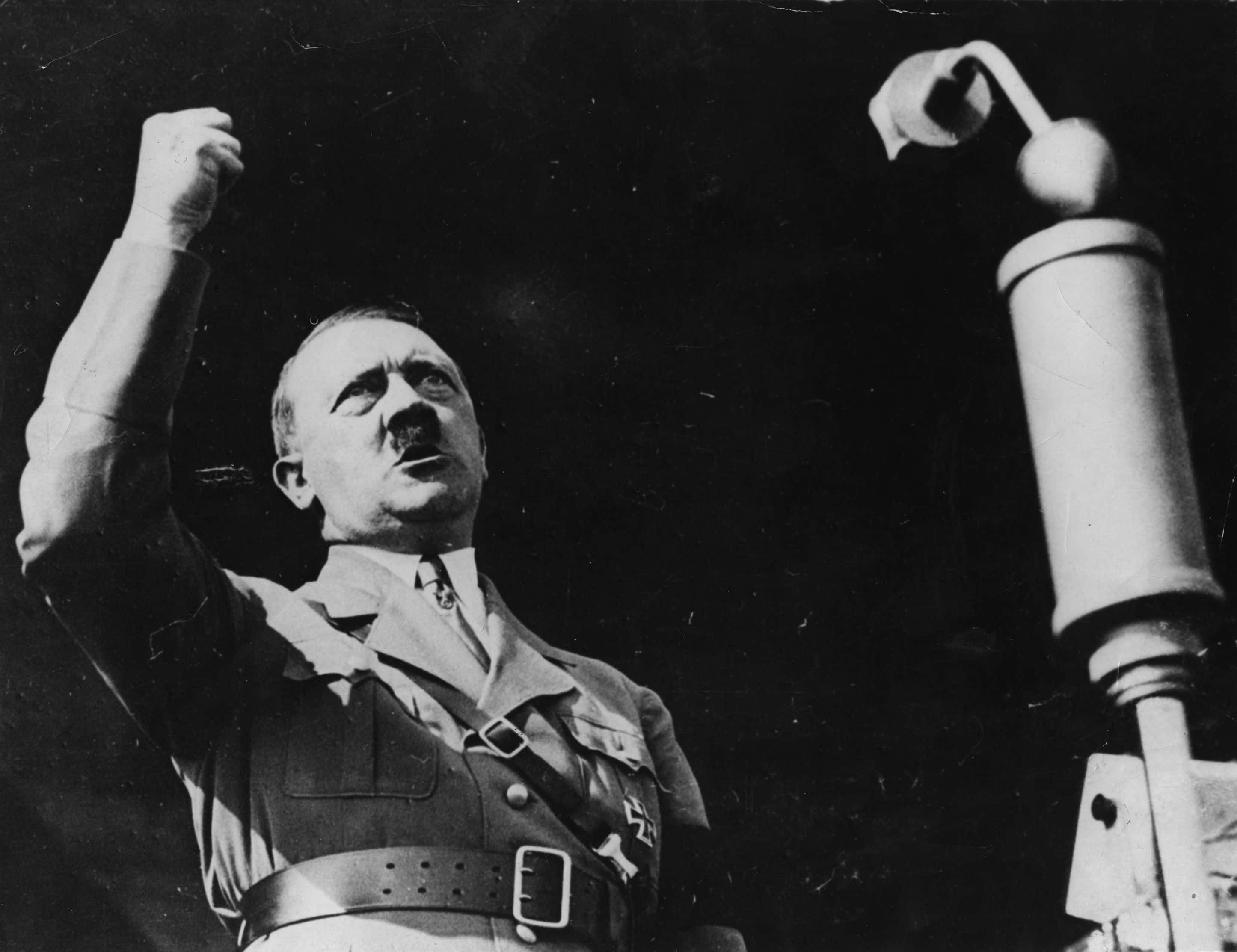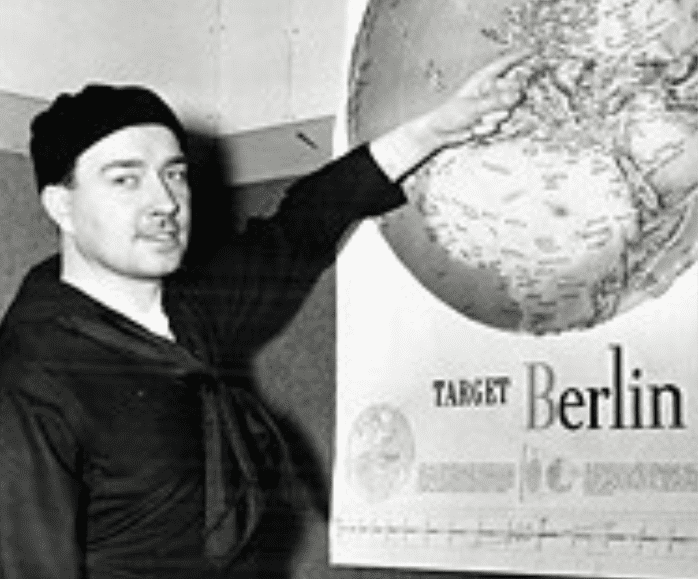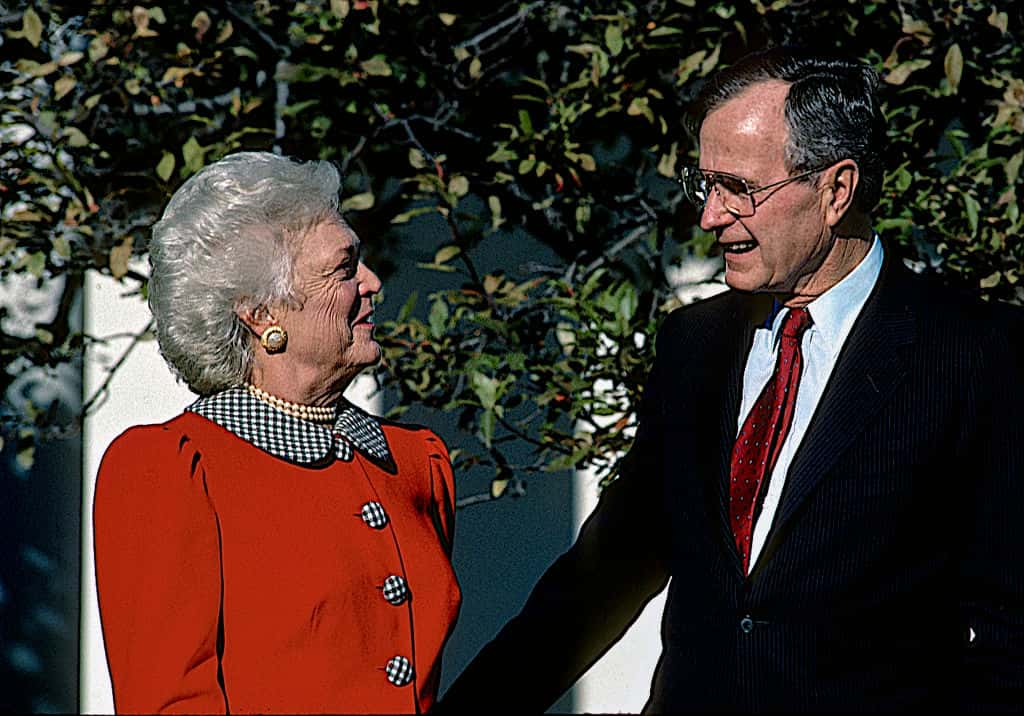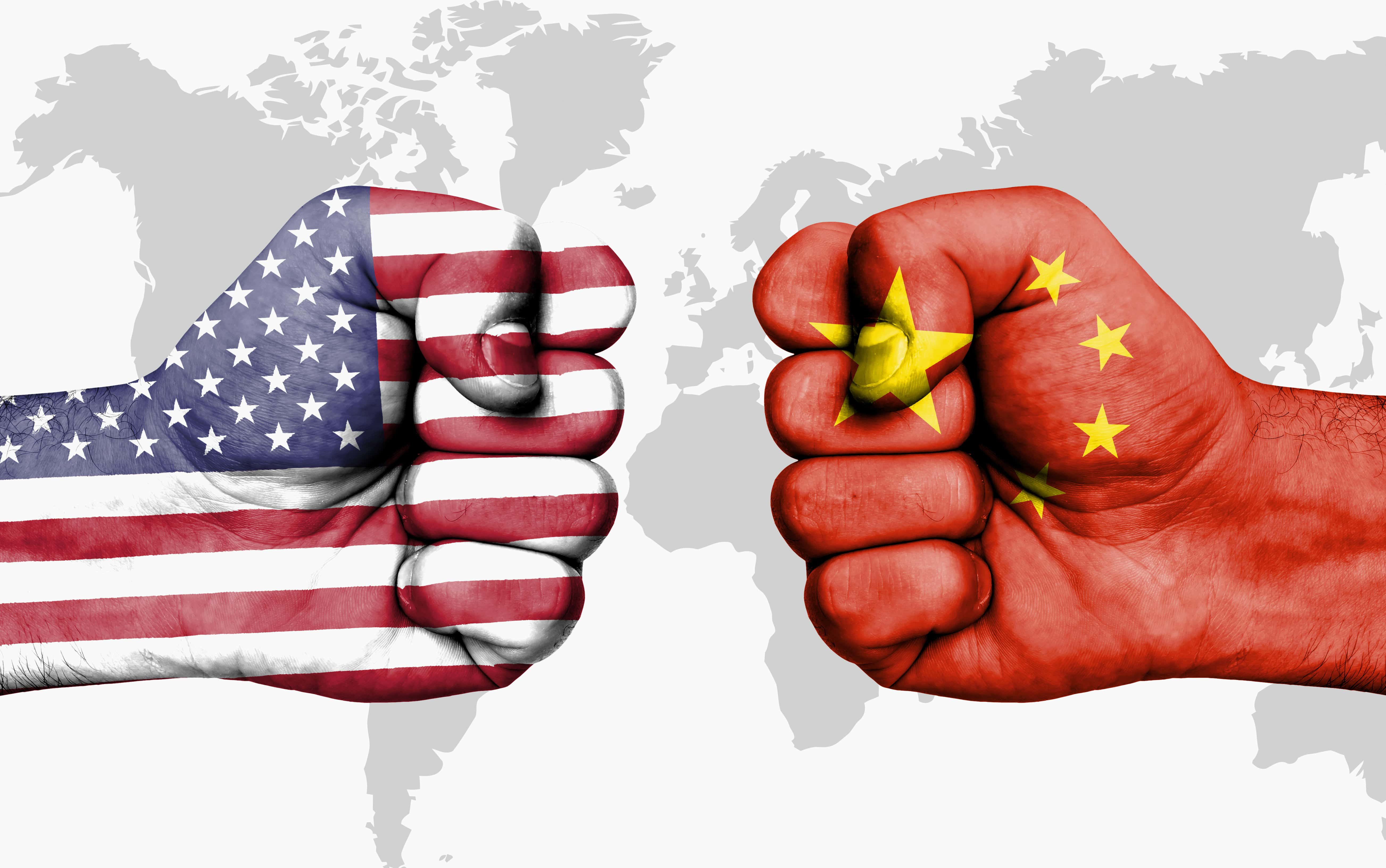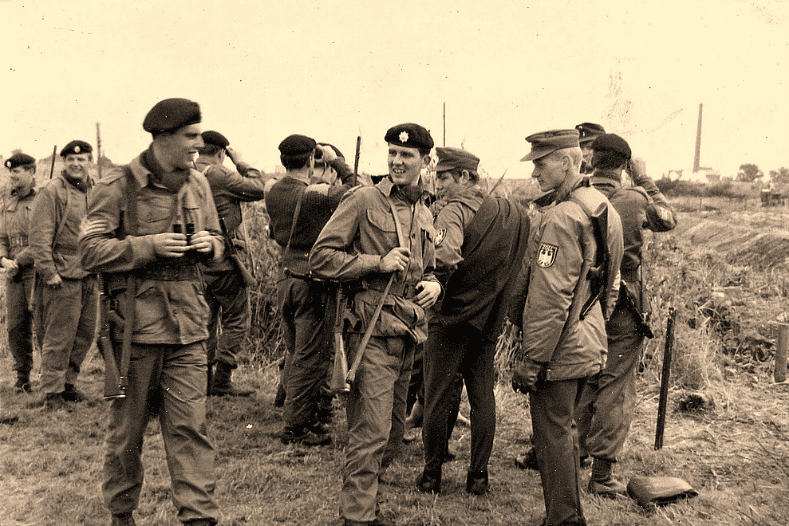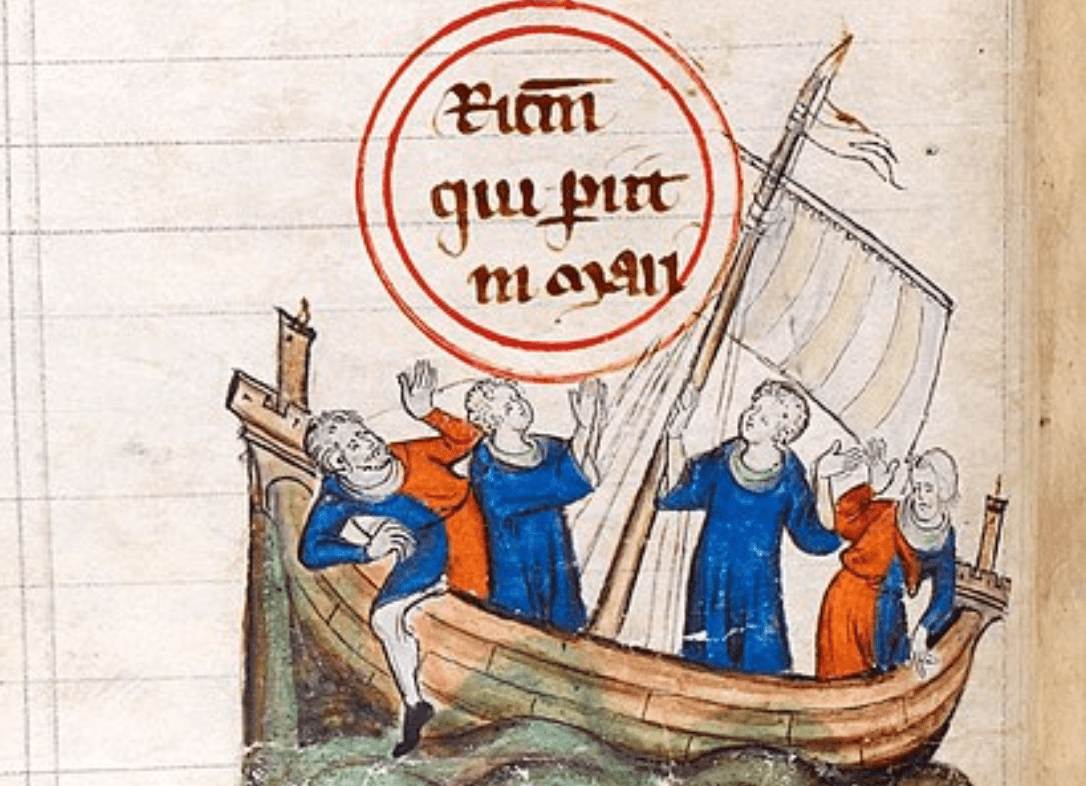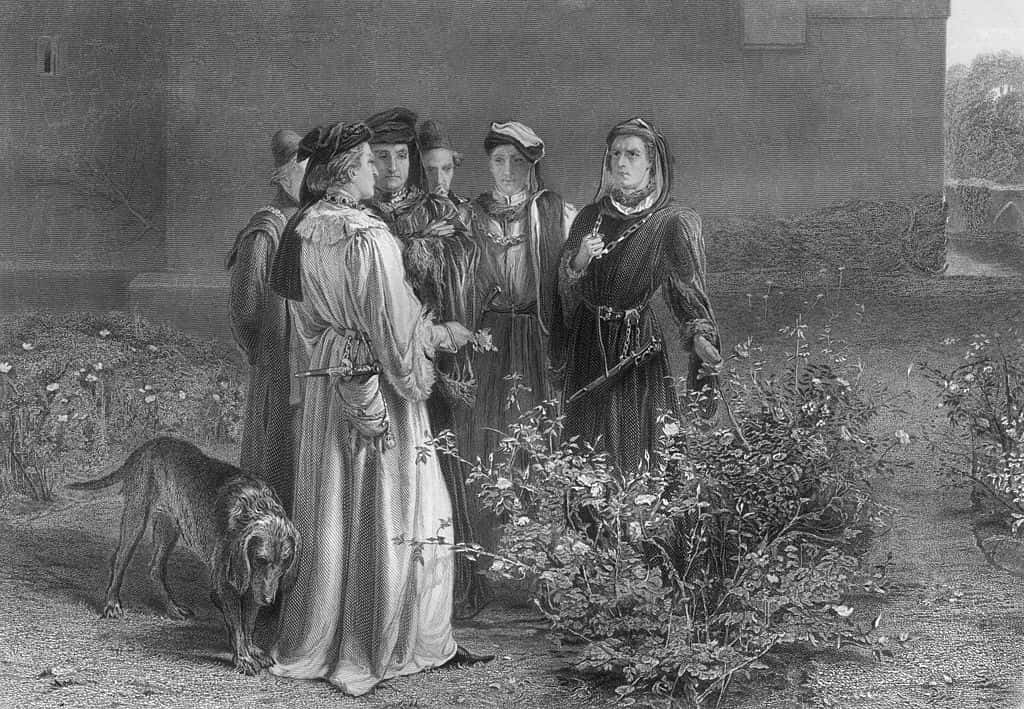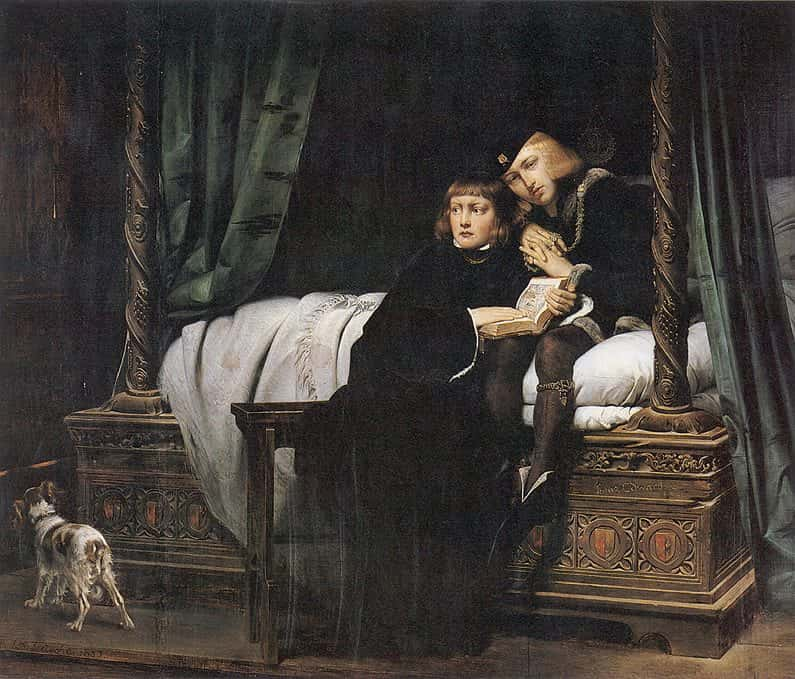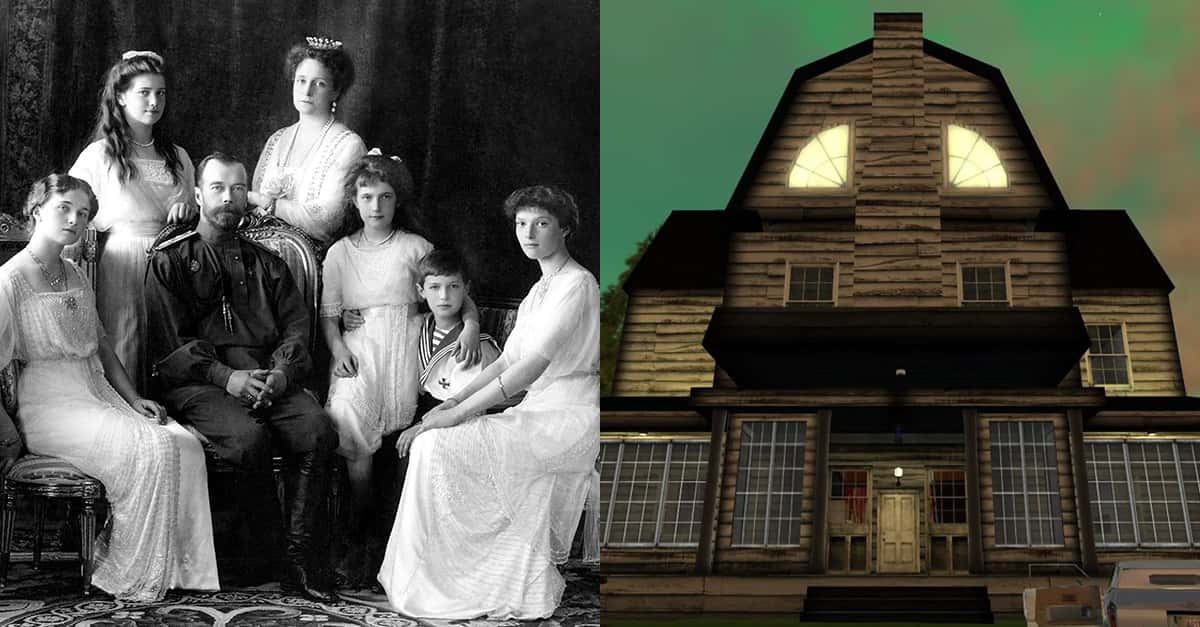We are undoubtedly living through a strange and dark time in history—but at least we can take solace in the fact that it has gotten a lot worse in the past. From brutal conflicts to devastating historic battles, humanity has persevered through some truly nightmarish eras. And back then, they didn't have Zoom and Netflix to get them through it! Read on to discover the depths of history's darkest eras.
1. Swimming With the…Meatballs?
Al Capone, the real-life “Scarface,” was a predominantly Chicago-based gangster. Capone cemented his prominence during the Prohibition years and earned himself one of the bloodiest reputations of any gangster anywhere. But he wasn’t immune to public opinion. During the Great Depression, Capone sponsored a soup kitchen to improve his public image. I, for one, would question the ingredients.
2. Holodomor Horrors
Peace times aren’t always…peaceful. The Holodomor—literal translation, “to kill by starvation”—is evidence of this. Now officially recognized by Ukraine as a genocide, the Holodomor was the intentional famine induced by Soviet Union policies in Ukraine. To describe the conditions of this terror is difficult, so let these three facts paint the picture...
3. If I Can’t See You, You Can’t...Live
There were widespread reports of people collapsing from hunger during the Holodomor. School children would just collapse at their desks from starvation. Adults would perish while trying to flee. One mother and father were so distraught that they hid their children in a hole so as not to have to watch them die. Believe it or not, that was a form of mercy in those times…
4. Red Famine, Red Rage
No one likes the sound of crying children, even less so when you’re in the middle of one of the worst periods in history. The hunger experienced during the Holodomor was so intense that people were driven mad—violently mad. One father became so enraged by the sound of his children crying for food that he silenced them…permanently.
I’ll spare you the details. Suffice it to say, they weren't smothered with hugs.
5. Hansel & Gretel-ed
Hunger can drive good people to do grim—as in Brothers Grimm—kinds of things. In Sumy province, police apprehended a man after he had gone mad from hunger. His crime? Cannibalism. When a neighbor questioned his relatively healthy appearance, the mad man replied, “I have eaten my children and, if you talk too much, I will eat you.” My lips are sealed.
6. Just Say “Nyet” to Nukes
Few people can say that they have saved the world. Superman, Iron Man, Thor…and Vasili Alexandrovich Arkhipov. The Soviet Era naval officer pulled the world back from the brink of nuclear disaster when he refused to agree to the use of nuclear torpedoes against the US Navy. His solo stance prevented the likelihood of an all-out nuclear conflict between the US and the Soviet Union.
7. Whose Side Are You On, Anyway?
El Cid is remembered as a hero of the Reconquista—a brutal seven-century period of conflict between Christian and Muslim kingdoms on the Iberian Peninsula in what is now Spain. However, his venerated place amongst some Christians is, uh, a little dubious. The famous knight’s first foray into battle was actually against a Christian state when he fought for a Muslim army.
Maybe it was just such a dark time in history that he couldn’t tell who he was charging into battle with and who he was swinging his sword at? Or maybe he was just a two-timing mercenary.
8. A King’s Ransom
Chivalry, they say, is dead, but the code of honor among knights and noblemen was in full practice during the horrific events of The Hundred Years’ War. No one proved that as much as the King of France himself, John II. After the English captured him, John posted what was the Middle Ages equivalent of bail—he paid a massive ransom for the English to set him free. There was just one catch: John had to leave French hostages in his stead. The two nations made the deal, but it was all undone almost immediately...
9. Honor Above All
Soon after John walked free, the French hostages escaped. In response, John, also known as John the Good, did the unthinkable. Instead of remaining a free man and thumbing his nose at his English captors, the French king respectfully returned to London and captivity. Never question this king’s honor.

Sign up to our newsletter.
History’s most fascinating stories and darkest secrets, delivered to your inbox daily. Making distraction rewarding since 2017.
10. A Not-So-Great Leap Forward
Imagine the depravities of the Holodomor mixed with the mismanagement of the Irish Potato Famine. China’s Great Leap Forward (...into a pit of despair and woe) was just such an atrocity. With anywhere between 18-45 million lost, the policies of Chairman Mao Zedong caused this horrific famine, which most historians today consider to be the worst…ever.
11. Rest In Pieces
Cannibalism is a running theme in the darkest eras in history, and the Great Chinese Famine resulted in the largest scale cannibalism in history...and some of the worst stories. One man in Xinmin village dug up his wife’s remains and cooked them. In Houxiyan village, a group of eight people did the same thing...with a departed child.
12. Dare Not Speak Its Name
Dozens of stories about the horrors of China’s Great Leap Forward can be found in Yang Jinsheng’s Tombstone: The Great Chinese Famine, 1958-1962. The book is so revealing of the atrocities that the Chinese government continues to ban it to this day. Perhaps the authorities are hoping that they can bury the past…then dig it up, cook it, and eat it.
13. Never Too Young to Burn
The Spanish Inquisition was an extremely dark time in the history of the Iberian Peninsula. Religious zealotry would see to the prosecution of 150,000 people and the execution of as many as 5,000. And the hunt for heretics knew no age limits. In a scene that could be straight out of a Game of Thrones episode, the Inquisition sentenced Inés Esteban to burn at the stake…she was 12 years old.
14. Land of Milk & Honey
The Irish Potato Famine caused the death by starvation of approximately one million people. The saddest thing is…it probably didn’t have to. During the worst years of the famine that lasted from 1845-1849, Ireland was exporting food—and a lot of it. In 1847, considered to be the worst year of the famine, nearly four million liters of butter were shipped to England. And oysters, rabbits, lard, and honey…
15. One and Done
On top of the million deaths that the Irish Potato Famine caused, it also forced another million Irishmen to emigrate. All told, the island’s population would decline by as much as 25%. Fortunately, this specific tragedy can likely never happen again. The particular pathogen that caused the potatoes to go putrid between 1845 and 1849 is believed to be extinct.
16. Puny Proclamation
The American Civil War was an unspeakably horrific chapter in American history, but at the very least, it led Abraham Lincoln’s 1862 Emancipation Proclamation—however, this legendary moment in history is widely misunderstood. Most people remember the Proclamation as the end of slavery in the United States…but it wasn’t. While the Proclamation freed over 3.5 million American slaves, it wouldn’t be until the Thirteenth Amendment in 1865 that the US finally abolished slavery for good.
17. Pay Me What You Owe Me
Even during the American Civil War, equal pay was a hot button topic. During the conflict, black soldiers fighting in the Union Army had to protest to get paid the same as their white comrades. At the time, white soldiers were earning nearly double that of their black counterparts—$13/month for white soldiers and an effective $7/month for black soldiers.
However, with the help of abolitionists, black veteran activists were able to get the equal pay they deserved, paid retroactively.
18. Own Worst Enemy
Americans took the idea of being one’s own worst enemy to the next level during the American Civil War. The in-house conflict remains the deadliest in terms of American casualties in the nation’s history. Between the Union and the Confederacy, approximately 2.1% of the American population would die as a result of the fighting.
Conversely, WWII claimed less than 0.5% of the American population.
19. I Heard You the First Time
“The shot heard round the world” originally referred to the first shot of the Battle of Concord and the onset of the American Revolutionary War. In subsequent years, however, the phrase has come to refer to the assassination of Archduke Franz Ferdinand and the beginning of WWI. There was a much louder sound than a gunshot, however, that would define one of the deadliest and darkest moments in history...
20. The Big Boom
In June 1917, the British army dug a series of tunnels underneath the German front line in Messines, France. The tunnels, however, were not for an early subway system. Instead, soldiers lined them with close to 1 million pounds of explosives. When detonated, the sound of the explosions carried straight across the English Channel where they could be heard in London…and even Dublin. Approximately 10,000 Germans died in the explosions.
21. Do You Measure Up?
During WWI, the minimum height requirement for a soldier was 5'3" or 160cm. So, what was a short, eager patriot to do? Certainly not let all of the giants do the fighting. During WWI, the British made great use of their vertically challenged compatriots by creating “Bantam Battalions” for those measuring between 4'10" and 5'3" tall.
These battalions became national heroes and took part in some of the fiercest battles in the war.
22. Let Them Eat Cake
The potentially deadly effects of mass hysteria are well-documented and researched. Much of that study has come from one of New England’s darkest hours, the Salem Witch Trials. This period saw countless brutal and disturbing methods of detecting witches—and some pretty strange ways of warding them off as well. One woman, Mary Sibley, directed one of her slaves to make a “witch cake” to keep evil spirits at bay.
The ingredients included rye and…urine. I'm not sure what I expected, but it wasn't that.
23. Three Bad Mice
Rarely is evil given a name, but from 1913-1918 in the Ottoman Empire, evil was called the “Three Pashas.” Consisting of Mehmed Taalat, Ismail Enver, and Ahmed Djemal, the Three Pashas were a power throuple that ruled the Ottoman Empire before and during WWI. In their attempts to create a Turkish ethno-state, they perpetrated three—THREE—genocides.
24. The Spangkanlishian Flu
The Spanish Flu is among the deadliest illnesses in history. Hundreds of millions of infected and tens of millions of dead. And just to think, it all started on the tiny Iberian—no, sorry, the Asian—I mean, the Kansan…uhh. Actually, we don't know where the outbreak started. The exact origins of the Spanish Flu remain a mystery. One thing we do know, however: it almost certainly didn't begin in Spain.
Because it raged during WWI, many countries refused to report on it, out of fears that it could damage morale. Neutral Spain, however, had no such qualms, and their newspapers widely covered the outbreak. Since most of the information about it came from Spain, people just assumed that's where it started.
25. Immunity Mutiny
The world is full of dangerous pathogens. Fortunately, we have our immune systems to protect us against…ourselves? In a grim irony, during the Spanish Flu, the stronger your immune system, the worse your chances of survival. The particularly pernicious strain of the flu that caused the outbreak triggered an often-fatal cytokine storm, a severe immune system reaction, in healthy individuals.
26. Take As Prescribed…
Medication dosage is serious business. Too little medication could have a patient withering in pain, too much could, well…you know. During the Spanish Flu, physicians prescribed aspirin—yes, the same thing that you take for a headache—to treat the deadly virus. The dosage prescribed, however, was more than seven times what is considered safe today, and likely contributed to many fatalities.
27. I’m Dreaming of a Red Christmas
The Dust Bowl Era in the United States coincided with the Great Depression. On top of losing their livelihoods, farmers across the American Midwest were losing their land…literally. One of the worst dust storms swept away more than 12 million pounds of topsoil and carried it out east. So much soil was in the atmosphere, in fact, that red snow fell in New England that winter. Who wants to make a blood angel?
28. An Electric Era
Getting caught in a Dust Bowl Era dust storm was a terrible fate—worse yet if you weren’t wearing a rubber suit. Apart from the whipping winds and scathing sands, the dust storms during this era were laced with electricity. The amount of electrical current generated was such that touching another person could have created a shock powerful enough to knock a grown man to the ground.
29. I’m Rich!
Monopoly has become notorious as a game with the potential to end friendships and tear families asunder. But during the Great Depression, it was an opportunity for families to get one thing they just wouldn’t get anywhere else: MONEY. The boardgame became wildly popular during the Great Depression as an inexpensive form of entertainment and fantasy.
30. Who-ville?
Imagine a town named in your honor. Imagine hundreds of them. Herbert Hoover, 31st president of the United States, had this unique...dishonor. Americans roundly blamed Hoover for the disasters of the Great Depression, including the rash of homelessness sweeping the country. The shantytowns that appeared during that time were referred to—with tongue firmly in cheek—as Hoovervilles.
The slums weren’t the only hardships getting the “presidential” treatment though…
31. Hoover Help
President Herbert Hoover’s early actions to fight the worst effects of the Great Depression were not particularly well-received. Newspapers took to portraying him as aloof and out-of-touch. It wasn’t long before the epithets “Hoover leather," (a cardboard patch in a shoe sole) and “Hoover blankets,” (newspaper used as blankets for warmth) gained traction.
The only real “hoovering” he did was even more unpopular…
32. Veteran Veto
At the end of WWI, the American government promised veterans a “bonus” for their service in the form of a type of bond. When the Great Depression struck, many veterans found themselves on hard times and rallied together in a DC “Hooverville” to demand early payment. Instead of honoring the veterans for their service, President Hoover sent the active army in to clear them out.
You’d think those guys would have had some respect for their elders.
33. A Veteran, Not a Hero
Before he sparked WWII and carried out some of the worst atrocities in history, Adolf Hitler was a WWI veteran with an Iron Cross. Allegedly, the former military runner survived a mustard gas attack which he claimed caused temporary blindness. Medical records, however, state that the soon-to-be genocidal maniac probably suffered from “hysterical blindness." Yeah, I’d say.
34. Adolf’s Addiction
It goes without saying that Adlf Hitler was a bad guy. What is less known, however, is that his affinity for blitzkriegs might have had something to do with the fact that he was, himself, blitzed. Starting in 1941, he was regularly taking injections of oxycodone, methamphetamine, morphine, and other drugs.
Some theories suggest that his deteriorating state of mind towards the end of WWII was the result of withdrawal.
35. Family Feud
Not only was half the planet fighting against Adolf Hitler, so was his family. The German Führer’s own nephew fought in the US Navy against Germany during WWII. But William Stuart-Houston, as he would become known, was not all that great himself. Stuart-Houston had attempted blackmailing his uncle for better jobs in Germany before moving to the United States.
36. POTUS Pâté
Do you ever feel like you’ve been saved for a higher purpose? During WWII, Japanese guns shot down a US Navy plane above the island of Chichijima. Japanese forces captured two of the surviving crewmembers and inflicted horrific treatment upon them before finally killing them and eating their livers. The pilot, however, managed to survive and escape to safety. That pilot was George H.W. Bush, the 41st president of the United States.
40. Cold War, Cooler Heads
Believe it or not, during the Cold War, the world came a lot closer to nuclear apocalypse than most would feel comfortable knowing. In 1983, the Soviet Union’s advance warning system malfunctioned and made it seem like the US had fired a volley of nuclear missiles at the city of Moscow. Fortunately, Stanislav Petrov, the lieutenant colonel of the Soviet Air Force, suspected the malfunction and chose to ignore protocol which would have seen the USSR return a retaliatory nuclear strike. Nostrovia!
41. Enemy of My Enemy…
The United States and the Soviet Union did not like each other during the Cold War, but there was one party they both disliked more than each other…E.T.! No, not Entertainment Tonight—extraterrestrials. The two superpowers agreed that, in the event of an alien invasion, they would work together as allies. What if the little green folk came in peace?
42. CIA Sells Seashells by the Seashore
Cuba’s Fidel Castro got himself embroiled the US and USSR's conflict, much to the ire of the Central Intelligence Agency in the US. The CIA spooks quickly began devising ways to, erm, get rid of their Castro problem. Of the allegedly 600+ plots against Castro’s life, one involved exploding seashells. They say you can hear the ocean in seashells…and, apparently, the tick, tick, boom of subterfuge.
43. Tongue Tied
You can tell a lot about a man from his shoes, but what do his shoelaces say? No, actually, what are they saying? During the Cold War, operatives working for the CIA looked for covert ways of communicating with one another. One of the methods used was “shoelace code.” Apart from the rabbit going into the hole, messages conveyed included “I have information for you” and “I’ll follow your instruction.”
44. He Shoots, He Scores!
Every country has a national sport—a game that amateurs enjoy recreationally and professionals take very seriously. For Cuba, that sport was baseball. So, when the CIA spotted a concentration of soccer fields on the island nation, they knew it wasn’t for the Cubans. Turns out their wacky hunch was right—the soccer fields were part of the Soviet presence in Cuba.
6. O Captain! My Captain!
“The Anarchy” was a nearly two-decade-long conflict in England and Normandy in the mid-12th century. This dark era in Middle English history was all the result of an unexpected tragedy. King Henry I’s only heir, William Adelin, drowned with the sinking of the White Ship, plunging the young kingdom into a succession crisis that tore England apart for years.
Rather than face the king, the ship’s captain, Thomas FitzStephen, cast himself back into the rough waters and drowned. The captain, I guess, must go down with the ship?
10. Say, “Uncle!”
If a single era in history inspired George R.R. Martin to write some of the grizzliest events in A Song of Ice and Fire, then it must have been a bleak era indeed. The Wars of the Roses were a series of conflicts in 15th-century England between the two Plantagenet houses: The House of Lancaster (sounds very much like Lannister to me) and the House of York. The warring families added to the already dismal social, economic, and political conditions in England following The Hundred Years’ War.
11. The Game of Thrones
While the feud between the two branches of the Plantagenet family was bloody and brutal, the in-fighting was just as repellant. When King Edward IV passed away on the throne, his eldest son became king—or, at least, he should have. Edward IV’s younger brother, Richard III, had other ideas. Richard had his nephews declared illegitimate and locked them in the Tower of London. The boys who would be kings, now known as the Princes in the Tower, were never seen again...at least, not alive.
In 1674, nearly 200 years later, the skeletal remains of two children were found under a staircase in the tower. However, historians still don’t know for sure if those remains belong to the two little princes.
22. License and Registration, Please
Some coincidences are easy to chalk up to circumstance. Others are, uh, a little harder to explain. The assassination of Archduke Franz Ferdinand—the event that would lead to WWI—is just such an occurrence. Assassins famously shot the Archduke in his car in Sarajevo. Many historians have noted the license plate number of that vehicle: “AIII 118.”
Some interpret that as “Armistice 11-11-18”—the end date of WWI. I’m not superstitious...but that’s weird.
Sources: 1, 2, 3, 4, 5, 6, 7, 8, 9, 10, 11, 12, 13, 14, 15, 16, 17, 18, 19, 20, 21, 22, 23, 24, 25, 26, 27, 28, 29, 30, 31, 32, 33, 34, 35, 36, 37, 38, 39, 40, 41, 42, 43, 44, 45, 46, 47, 48, 49, 50, 51, 52, 53, 54, 55, 56, 57, 58, 59, 60, 61, 62, 63, 64, 65, 66, 67, 68, 69, 70, 71, 72, 73, 74, 75, 76, 77

